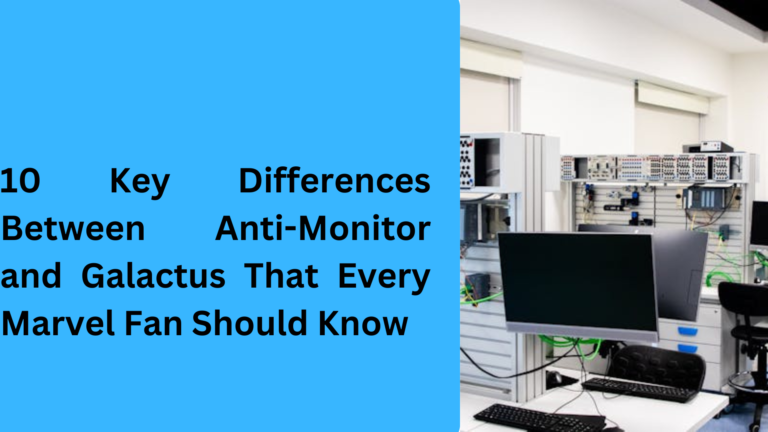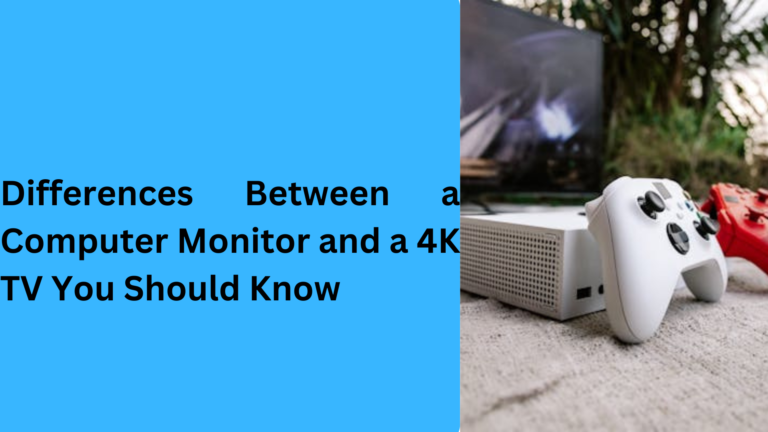10 Popular Differences Between OLED and IPS Monitors: What You Need to Know
When it comes to choosing a display for your computer or television, OLED and IPS monitors are two of the most common options available. Both offer exceptional picture quality, but they are different in several key areas. Understanding these differences can help you decide which type of monitor is right for your needs. In this article, we’ll discuss the top 5 differences between OLED and IPS monitors that everyone should know before making a purchase.
1. Picture Quality and Color Accuracy: OLED vs IPS Monitor Showdown
One of the most noticeable differences between OLED and IPS monitors is their picture quality. OLED (Organic Light Emitting Diode) technology offers deeper blacks and higher contrast ratios. This is because each pixel in an OLED display emits its own light, allowing for true black levels. On the other hand, IPS (In-Plane Switching) panels, while offering superior color reproduction and wide viewing angles, cannot achieve the same depth of black because they rely on a backlight.
If you’re looking for a monitor with vibrant, rich colors and excellent black levels, an OLED display would be your best bet. IPS displays, however, are known for providing consistent color accuracy and are often preferred by professionals in fields like graphic design or video editing, where color precision is critical.
2. Brightness and Viewing Angles: Which One Wins?
When it comes to brightness and viewing angles, IPS monitors are traditionally superior. IPS technology provides better color consistency and brightness levels across a wide range of angles. Whether you’re looking at the screen from the left, right, or even from the top or bottom, IPS screens maintain accurate colors and brightness, making them a popular choice for multimonitor setups or collaborative work environments.
In comparison, OLED screens tend to have higher peak brightness, which is great for HDR (High Dynamic Range) content, but OLED technology can suffer from brightness degradation over time. As a result, IPS displays are a safer choice for people who need to rely on consistent performance in bright rooms.
3. Longevity and Burn-In Issues: OLED vs IPS Display Durability
Another important difference to consider when comparing OLED monitors with IPS monitors is their longevity. OLED displays are known to suffer from burn-in or image retention, which occurs when static images (like a website logo or game HUD) are displayed for extended periods. This can lead to permanent marks on the screen. If you’re someone who uses your monitor for static content or gaming, this could be a concern for you.
On the other hand, IPS monitors do not suffer from burn-in issues. They offer better long-term durability for people who need to use their screens for extended periods without worrying about the display becoming damaged over time. IPS technology has a solid reputation for long-lasting performance, even under heavy use.
4. Response Time and Gaming Performance: OLED or IPS for Gamers?
If you’re a gamer looking for fast response times and smooth gaming performance, both OLED and IPS monitors offer great options. However, OLED displays typically have faster response times compared to IPS monitors. This means that OLED screens can handle fast-paced action with less motion blur, offering a better gaming experience for competitive players who need the fastest refresh rates.
That said, IPS displays have been catching up in recent years, with many IPS gaming monitors offering impressive refresh rates (up to 240Hz or higher) and low input lag, making them a solid option for casual gamers. For competitive gaming, though, OLED displays may have the edge in terms of speed and responsiveness.
5. Cost and Affordability: OLED vs IPS Price Comparison
When it comes to price, OLED monitors tend to be more expensive than IPS monitors. OLED technology is still relatively new and expensive to produce, which is reflected in the price of OLED monitors. While OLED panels offer superior contrast and color depth, they come with a higher price tag.
IPS monitors, on the other hand, are generally more affordable and offer great value for the price. You can find IPS monitors with excellent color accuracy and wide viewing angles at a lower cost than OLED displays. If you’re on a budget but still want a high-quality monitor, IPS technology might be a more cost-effective choice.
6. Energy Consumption: OLED vs IPS Efficiency
When it comes to energy efficiency, OLED monitors and IPS monitors behave quite differently. OLED displays are more energy-efficient when displaying darker content because each pixel emits its own light. Since black pixels are turned off in OLED technology, this results in lower power consumption for darker images. This makes OLED displays a good choice for people who use their monitors primarily for watching dark movies or playing dark-themed games.
On the other hand, IPS monitors, which rely on a backlight, consume more power regardless of the image being displayed. Even when showing black or darker images, the backlight remains on, leading to higher overall energy consumption compared to OLED screens. If you’re looking for a monitor that saves energy, OLED displays have an edge in scenarios where dark content is frequently displayed.
7. Thickness and Design: OLED vs IPS Monitor Form Factor
Another area where OLED monitors and IPS monitors differ is their design and thickness. OLED technology allows for ultra-thin displays because there is no need for a traditional backlight. As a result, OLED monitors are often thinner and more lightweight, making them ideal for sleek, modern setups where space is limited or for wall-mounted displays.
In contrast, IPS monitors, due to their reliance on a backlight, tend to be thicker and bulkier, although they have become progressively thinner over the years. If having a slim, stylish monitor is important to you, OLED displays offer a clear advantage with their minimalist design. However, IPS monitors still provide great options for people who prefer solid, durable builds.
8. HDR Performance: OLED vs IPS for High Dynamic Range Content
For those who enjoy high-quality HDR (High Dynamic Range) content, OLED displays typically outperform IPS monitors. OLED technology has the unique ability to produce true black levels, which is crucial for HDR performance. The high contrast ratio achieved by OLED screens enhances the vividness and depth of HDR content, making OLED monitors ideal for people who enjoy watching movies, playing games, or working with high-end graphics.
Although IPS displays have made significant strides in HDR capabilities, they still cannot achieve the same level of contrast as OLED monitors. IPS panels offer bright colors and a wider color gamut, but they often struggle to match the depth and contrast of OLEDs in HDR content. If you’re a content creator or cinema enthusiast, OLED displays offer superior HDR performance.
9. Screen Burn-In Prevention: OLED vs IPS Display Longevity
Screen burn-in is a well-known issue for OLED displays, which occurs when static images are displayed for long periods of time, leading to permanent ghost images on the screen. This problem is particularly evident in monitors used for gaming or watching TV where static elements like logos, HUDs, or channels are visible for extended periods. OLED manufacturers have implemented features to help prevent burn-in, such as pixel shifting and screen savers, but the risk still exists.
IPS monitors, however, do not suffer from burn-in issues because they use a backlight, and each pixel is not individually illuminated. This makes IPS technology much more suited for applications where static images are displayed for long durations, such as office work, digital signage, or public displays. If you’re concerned about longevity and want a display that can handle static content without risk of burn-in, IPS displays offer peace of mind.
10. Price Over Time: OLED vs IPS Monitors for Budget Shoppers
While OLED monitors tend to have a high upfront cost, the price of OLED technology may decrease as it becomes more widespread and production methods improve. As more OLED TVs and OLED monitors are introduced to the market, we can expect the price gap between OLED and IPS monitors to narrow. However, at present, IPS monitors remain the more affordable option, especially for budget-conscious shoppers who want a high-quality monitor without breaking the bank.
For those who need a budget-friendly solution, IPS monitors are the better choice. You can find IPS displays with great color accuracy, wide viewing angles, and decent gaming performance at a much lower price point compared to OLED screens. However, if you’re willing to invest more in the long run for better picture quality and advanced features, OLED monitors might be the best choice.
1. What is the difference between OLED and IPS monitors for gaming?
When comparing OLED vs IPS monitors for gaming, the key difference lies in response time and motion clarity. OLED monitors offer faster response times and better contrast, which is ideal for fast-paced gaming, providing smoother and more immersive gameplay. However, IPS monitors are also great for gaming, offering wide viewing angles and consistent color accuracy. While OLED displays may have the edge in speed, IPS displays are often more affordable and still provide excellent gaming performance.
2. Which is better for color accuracy: OLED or IPS monitor?
For color accuracy, both OLED and IPS monitors perform well, but IPS monitors are typically the top choice for professional color work. IPS displays have a reputation for offering consistent color reproduction across a wide range of viewing angles, making them perfect for tasks like photo editing and graphic design. OLED monitors provide vibrant colors and high contrast ratios, but IPS technology is generally more reliable when it comes to precise color accuracy for creative professionals.
3. Do OLED monitors suffer from screen burn-in issues?
Yes, OLED monitors can suffer from screen burn-in if static images are left on the screen for prolonged periods. This issue occurs because each pixel in an OLED display emits its own light, and constant exposure to static content, such as game HUDs or logos, can cause uneven wear. IPS monitors, however, do not have this problem since they use a backlight, making them a better option for applications involving static content or for those who are concerned about screen burn-in.
4. Are OLED monitors better for watching movies compared to IPS monitors?
Yes, OLED monitors are generally considered superior for watching movies compared to IPS monitors. This is due to their ability to produce true black levels and achieve higher contrast ratios, making scenes in movies look more vibrant and immersive. The individual pixel control in OLED technology allows for deeper blacks, which significantly enhances the viewing experience, especially in dark-themed movies or HDR content. IPS monitors, while offering great color accuracy, cannot match the contrast and black depth of OLED displays.
5. Which is more energy-efficient: OLED or IPS monitors?
OLED monitors are generally more energy-efficient than IPS monitors when displaying dark images. Since each pixel in an OLED display emits its own light, pixels showing black or dark content use little to no power, resulting in lower energy consumption. In contrast, IPS monitors rely on a backlight that stays on, even when displaying dark images, which leads to higher power usage. However, if you primarily use your monitor for bright content, the energy difference between OLED and IPS may be less noticeable.




